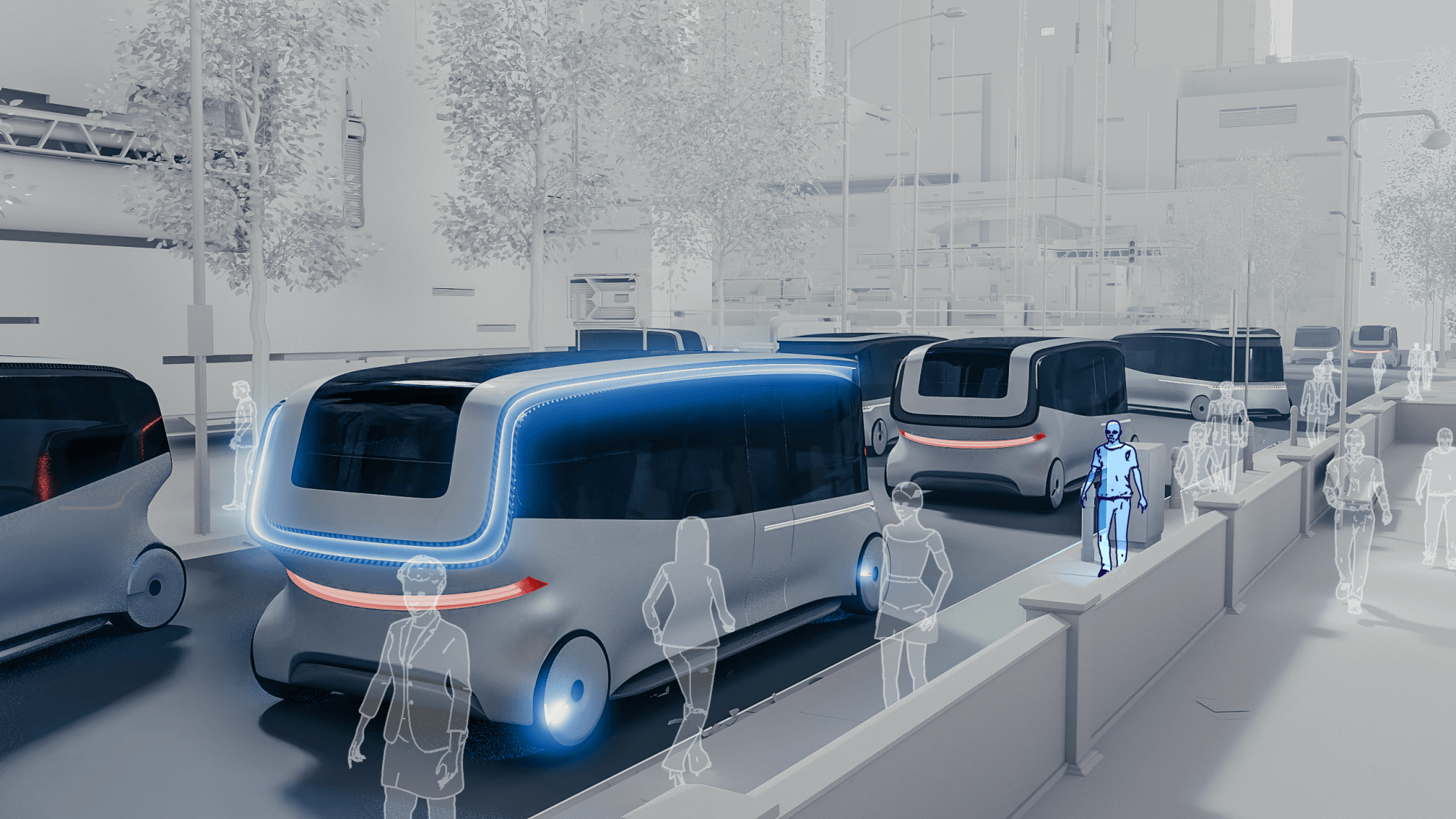
“ Spotlight is a public transportation recognition system based on future intelligent route planning bus services. This system uses light, sound, and AR to help users identify the bus they are booking from among many similar vehicles. ”
Contents
🚌 BACKGROUND: Future Bus System
🏙️ Urbanization
With the intensification of urbanization in the future, the population density has surged, environmental pollution problems have become more prominent, and people’s commuting will become more and more a problem. Public transport with higher space utilization and more environmental protection also takes an increasingly important role in urban transport.
🌐 Internet of Vehicles
With the development of technologies such as 5G, big data, autonomous driving, and electrification, the Internet of Vehicles will be realized in the near future.
🚌 Future Bus System
In the future, the bus route will no longer be fixed, but the intelligent transportation system will be flexibly planned according to the actual situation.
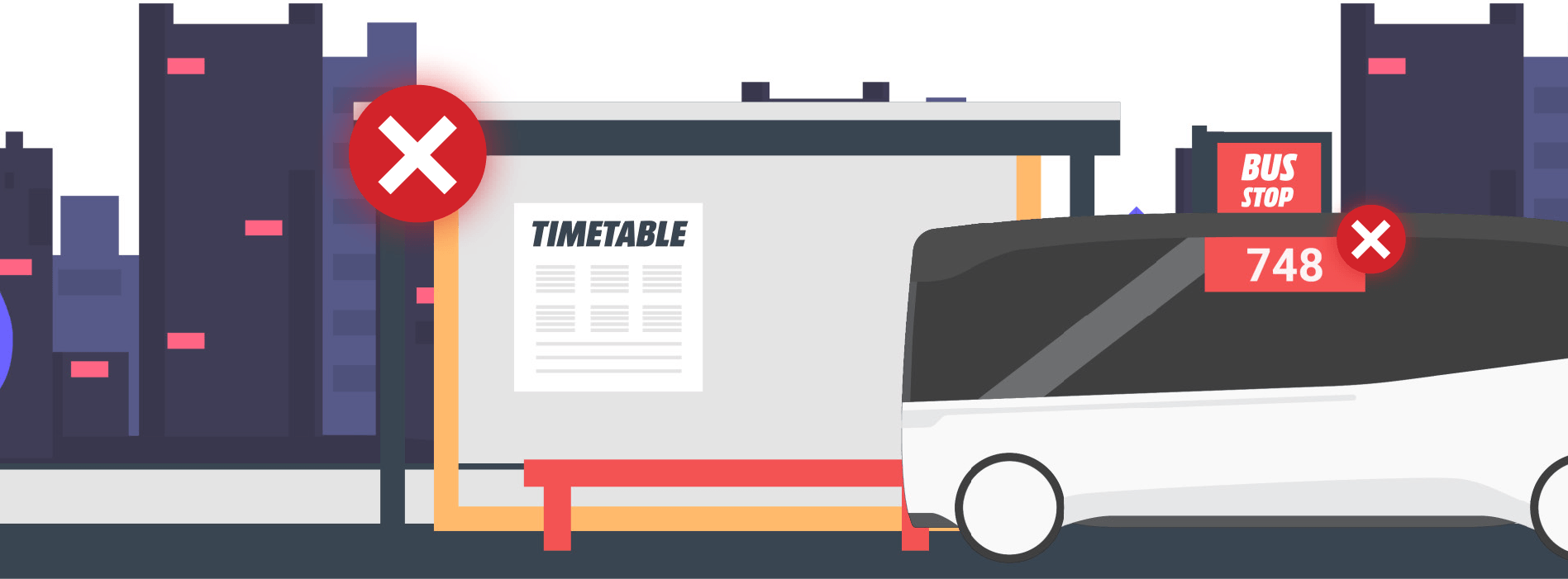
There are no fixed bus routes in the future
🎯 TARGET: Identification Problem
Such a highly flexible public transportation system can also create new problems. At the peak time, many buses with the same appearance will appear at the same time and in the same location. It is naturally a problem for users to find the right bus that should get on.
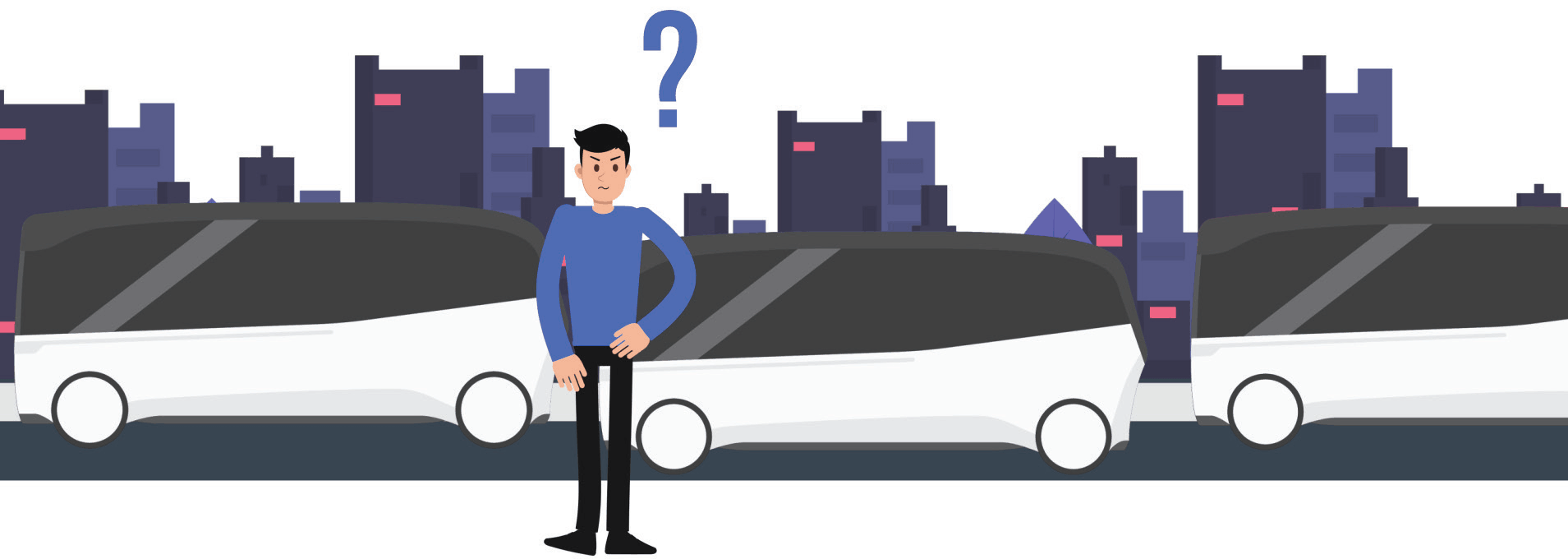
In response to such a problem, we have designed a car-recognition interactive system – Spotlight. It takes the additional lights of the vehicle as the core, the mobile AR recognition, and sound as the supplement.
📰 STORYBOARD: Go through the Spotlight
📱 Pre-order
We experience this system from the perspective of a future office worker John. When John needs to travel, he only needs to book a car in the APP, enter the starting point first, and the system will assign the nearest reasonable parking point. Enter the endpoint again, and after confirming, the system will assign an on-street intelligent bus, pick John at the scheduled departure point at the scheduled time, and prompt John to identify the color of the bus.
🔍 Find the Bus
The bus will arrive at the boarding point in advance to wait for John, and the lights slowly breathe as a stop. After John arrives at the pick-up location, there may be multiple buses at the same location. At this point, John can lift the phone and use the app’s AR function to assist identification. At this time, the mobile phone interface becomes dark, and when John’s reserved bus appears on the interface, AR will highlight the bus to assist John’s identification.
✅ Make Sure
When John finds the bus he has booked, AR will also prompt the fastest boarding route. As John approached the bus, the breathing rate of the lights accelerated to remind John.
👆 Get on the Bus
When John reached the door, the door opened automatically for him. When John stepped on the pedal, the green light around the B-pillar door frame and the pedal sounded the correct tone. If someone follows John into the wrong car, a red light will light up around the B pillar door frame, and an error sound will sound to prevent the user from getting in the wrong car. When the vehicle exits, the overhead lights will go out. At low speeds, buses will also play a soft, natural sound continuously to remind the vehicle that it is driving. We chose here the sound of the waves.
❗ Warn Pedestrians
When a passerby blocks the driving route, the overhead light will flash red, and the closer to the passerby, the faster the strobe light. The sound of the driving which like wave sound, also became intense to warn passersby.
👇 Get off the Bus
John’s destination has arrived. When John got out of the car, a green light would also light up around the door frame and the correct alert sounded. If someone followed John but got in the wrong place, a red light would turn on around the door frame, and an error sound would sound to prevent her from getting in the wrong car.
💡 INTERACTION: Solutions to the Identification Problem
INTERACTION: Identification Problem of Future Bus System
✨ Breathing Lights
We have different light breathing animations to indicate the status of the vehicle, assist the user in finding a car, and so on. The picture is a breathing bus light when the bus docked. As the user approaches, the breathing speed will gradually increase.
✅ How to Make Sure
When the user successfully gets on the right bus and gets off at the right destination, the lights around the door frame will be a green light and sound the correct prompt. If the user successfully gets on the wrong bus and gets off at the wrong destination, there will be a red light, and sound the warning prompt.
❔ Why We Choose the Light
Let us explain why we give up the screen, graphics, and other elements, but use the basic color distinction and the brightness of the light to help users find the bus.
- Excellent Long-distance Recognizability
Needless to say, users definitely don’t want to go near the car to confirm whether the car is picking up. - Privacy Protection
If the screen and image text are used to prompt the user, and the user needs to easily recognize it, it will inevitably involve the user’s name or screen name, mobile phone number, and other information, which is also difficult to accept. - Low Cost
From the perspective of users, the reason why they choose to travel by public transportation is obvious because public transportation is cheap enough and affordable. This also requires us to retrofit the system to control costs as much as possible.
🎨 The Choice of Light Colors
Specific to the choice of colors, we should choose colors that are sufficiently distinguishable and familiar enough for the user. Naturally, we first think of rainbow colors: red, orange, yellow, green, blue, indigo, violet.
There are three factors will affect the colors of the light that the users see: the colors of the environment, the brightness of the light, the color shift of the light device. So we remove the orange that may be confused with the yellow. And blue that may be confused with indigo.
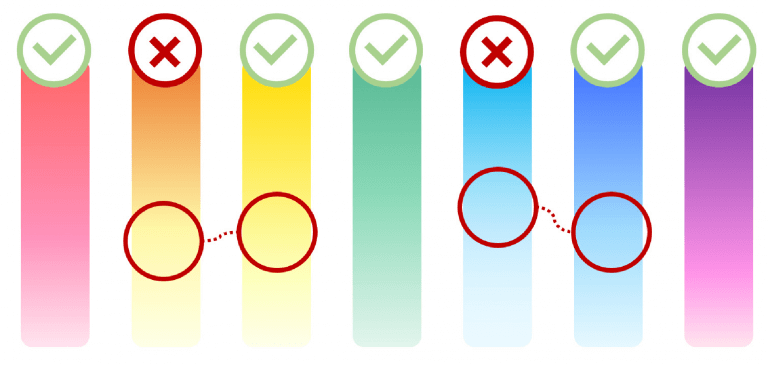
The Choice of Light Colors
📱 APP Interface
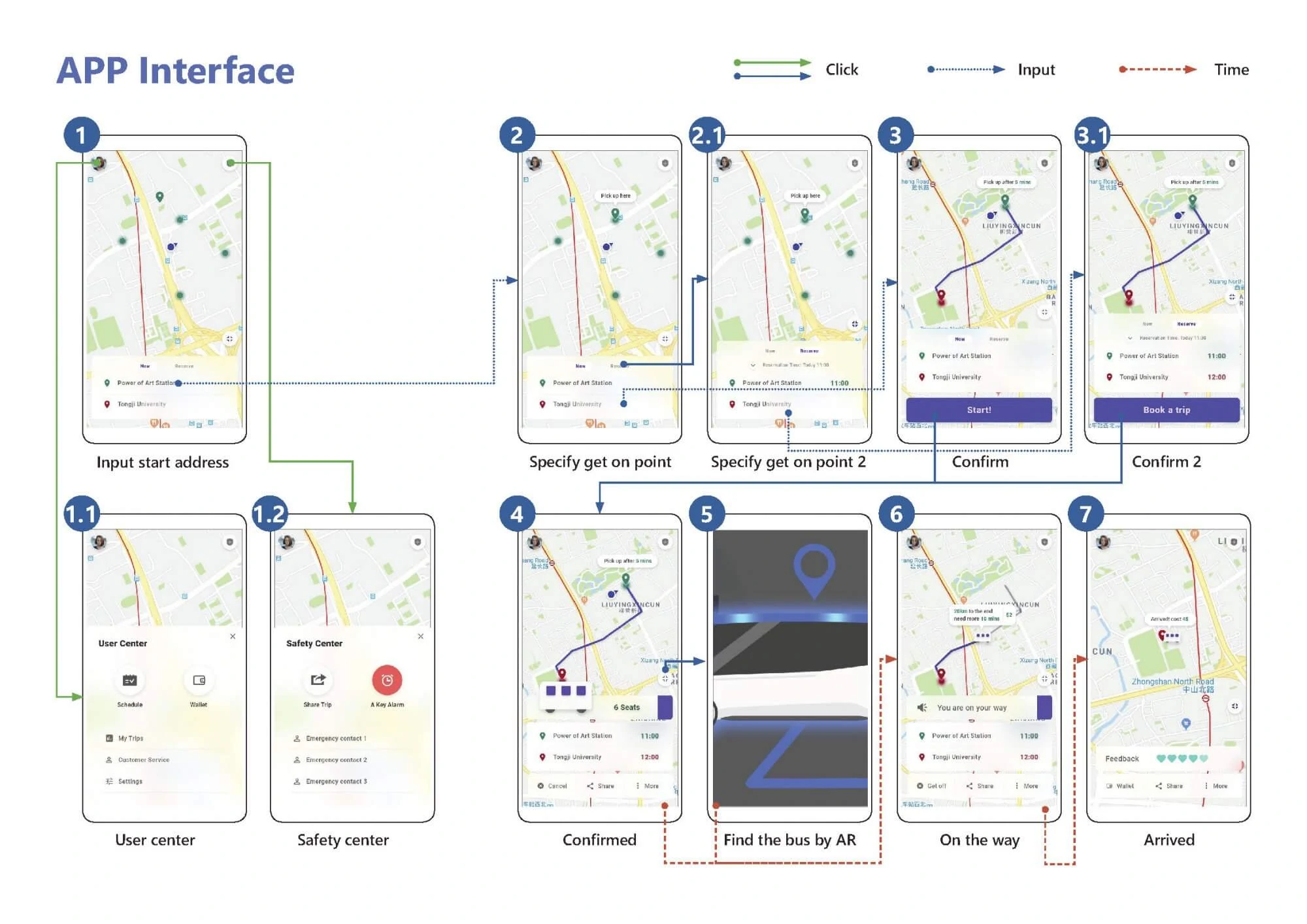
APP Interface
💵 BUSINESS: Reduce System Cost
🛠️ Modification of Existing Bus
Our identification system can be implemented by retrofitting existing buses. Take a shared bicycle as an example. It is good to design a new car from the beginning like Mobike. It can also be done by networking traditional models and adding some hardware like Ofo. Our solution can also be achieved by connecting the buses to the bus networking system and adding identification lights. It does not necessarily require advanced technologies such as unmanned driving.

Modification of existing bus
📸 Identification Light System Hardware
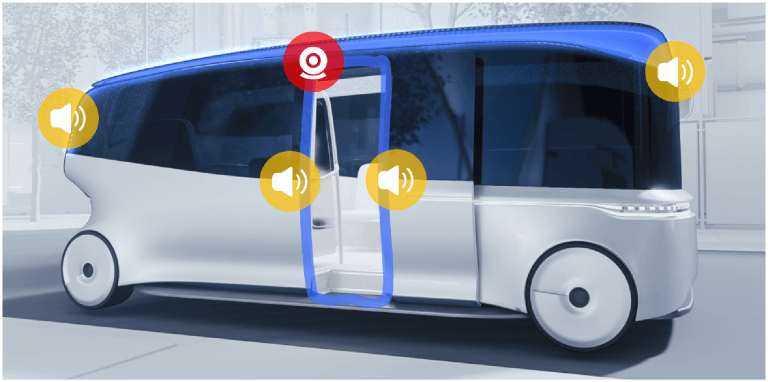
Identification Light System Hardware
- Light Strips
Non-direct light strips are arranged on the top of the bus to help users find buses. By reflecting, the light gets softer and larger recognition area, which improves recognizability and reduces light pollution. - Camera
A wide-angle face recognition camera is also arranged above the door frame to identify the user. - Speaker
We arranged several speakers around the top to ensure that pedestrians in all directions can be reminded and that the reminder can have a certain orientation and reduce the disturbance.
🚌 Multiple bus sizes
The size and load capacity of the car body can also be changed according to the needs of different regions, different time periods, and different routes to achieve more optimal distribution and adapt to a wider range of scenarios.

Multiple bus sizes
想知道这个作品集网站是怎么做的,感谢🙏
用的是wordpress,服务器买的阿里云